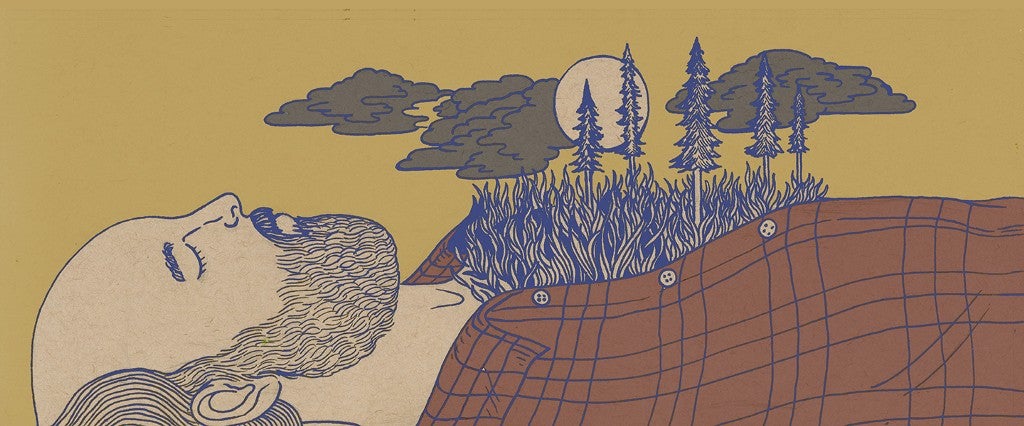This spring, The New York Times confidently announced the return of chest hair, contextualizing the trend as an extension of the lumberjack look that brought with it beards and a more rugged, natural approach to men’s grooming. It’s hard to imagine a day of felling trees starting with a chest wax, of course, so it shouldn’t be a surprise to find a hairy chest under the lumberjack’s flannel.
But while all eyes were on beards and man buns, chest hair may have been quietly making a comeback for the last couple of years. Now that some pundits are declaring we’ve reached “peak beard,” it may be chest hair’s time to grab some glory.
Last time chest hair was in, so were deep open-neck shirts, a 1970s style that’s experienced a bit of a revival, with bell-bottoms back on the runways. Stylist and fashion blogger Antonio Guerrero can already see the emergence of street styles that would allow a glimpse of chest hair: “Even with more urban-background brands you can see Off-White and Vetements killing it and making low-cut tops for men cool again. Saint Laurent’s whole aesthetic is that rocker, deep-plunging neck line, badass vibe. Another huge trend is the distressed rock band tees. The way those are distressed would be the perfect way to expose your chest while staying on trend.”
Even for the less trend-oriented guy, anything can be worn to reveal a bit more of the chest area. “A button-up, unbuttoned low, with jeans or even a blazer over it for a more casual night out would show off chest hair,” offers Guerrero.
But chest hair clearly has a few obstacles to overcome before it can take the place of facial hair as a mainstream look. Firstly, beards are visible all the time; they become part of the personality you project to others. Nigel, a 38-year-old entrepreneur in Spain, has worn a beard for years, trying everything from stubble to a fuller beard to a completely clean shave in the summer. “I hated it,” he remembers of the clean-shaven look. But his chest hair “didn’t help offset how naked being clean-shaven made me feel as no one could see it anyway.” Secondly, chest hair hides another, competing, masculinity symbol: muscles. U.K.–based men’s grooming expert, Lee Kynaston doesn’t see the smooth-chested look of the last 15 years or so disappearing anytime soon: “Men who work out want to show off their hard work and that usually involves hair removal.”
There is inevitably some trade-off between hair and muscles—two symbols of masculinity that don’t necessarily complement one another. A compromise is the clippered look, as seen on models like Nyle Dimarco and celebs like Gerard Butler, Ryan Reynolds and Bradley Cooper.
Tyson Seburn, a 42-year-old teacher in Toronto, recently clipped back his full hipster beard and is currently sporting a clipped rather than bare chest. When he was younger, he didn’t have that much chest hair, but now that he’s older he likes to keep it under control. “I do like a good set of chest hair, though. I find it sexy, on others in particular, so I like seeing a bit of it protruding from a shirt, myself included—but only in certain informal contexts and not at work.”
This hesitation about which social contexts are acceptable for chest hair is due, in part, to a lack of research into how chest hair is perceived. Christopher Oldstone-Moore’s 2015 book Of Beards and Men had him poring over academic studies on beards but, he says “Men’s body hair is like the frontier of this kind of research because it just hasn’t been done.”
He thinks, though, that just as beards have become acceptable in the office but are “still not acceptable for law and military, places where personal ‘trust’ and ‘honor’ are at a very high premium,” the same pattern would apply to chest hair. “The more informal business settings, like tech, might allow more hair, and also the higher-ranked managers would be permitted more leeway.”
But it’s more likely that a trend for chest hair would be visible in recreational environments as “the advantage of chest over facial hair is that you can cover up for more formal settings, and open up for less.”
Whether you favor clippering, full hair or a bare chest, the decision to try growing it may not be in your hands. While growing some level of beard, even if it’s just stubble, is attainable for most men, chest hair is just genetic luck. “The problem chest hair would have to overcome,” Oldstone-Moore explains, “is that I don’t think men as a group are going to buy into a symbol that so many of them can’t participate in, so social pressure will push them towards a different look.”
You might wonder if chest hair’s very unattainability wouldn’t make it a more sought-after status symbol, but Oldstone-Moore thinks men’s grooming has less to do with an overt display of superiority than camaraderie with other men. “There is a competitive element, but even beard clubs and beard competitions are about creating a sort of brotherhood and a collective and personal pride in masculinity.”
One of the factors keeping beards in fashion, despite predictions of their demise, is the constantly fluctuating idea of what “manly” means. “Men these days are struggling with their identity collectively and individually,” Oldstone-Moore says. “If the beard does die out, they’re going to be looking for something else.”
